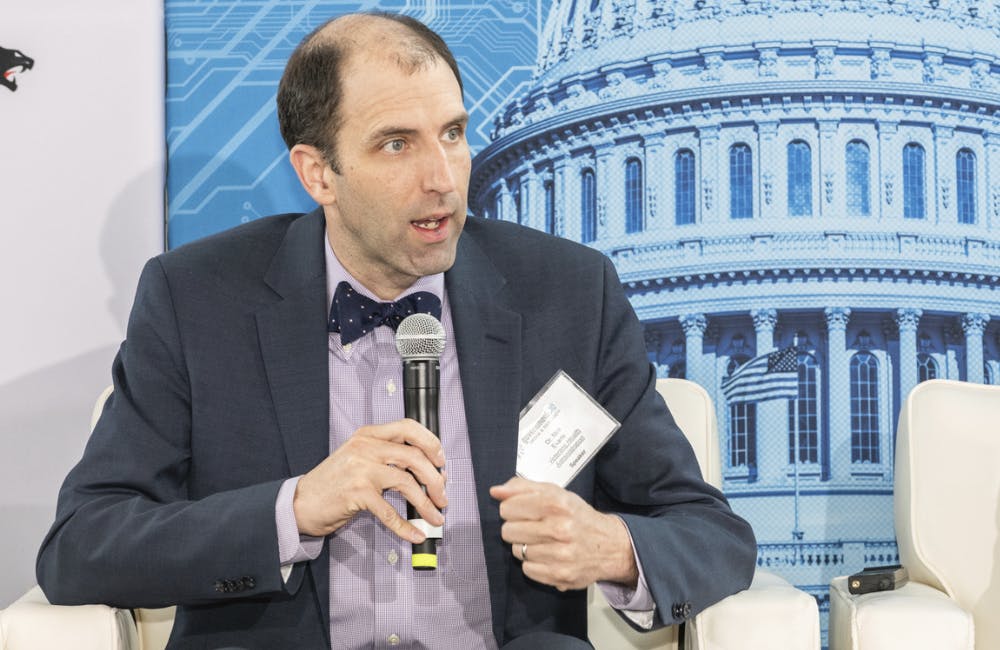DOD’s Next Steps for 5G Military Deployment
The Defense Department is prototyping a series of 5G technologies across its bases to advance areas including telemedicine.

The Defense Department is in the process of large-scale prototyping of 5G networks and technologies and most recently announced a series of experiments to further these efforts, DOD Technical Director for 5G Joseph Evans said during a Thursday ACT-IAC webinar.
DOD has a three-pronged approach to its next-generation connectivity, Evans said. The first is to accelerate the pace of 5G adoption, second to make breakthroughs in the use of 5G and finally to innovate toward the future of “next-generation G” networks.
Toward this goal, Evans reported progress that DOD made last year in 5G deployment, which included turning five military bases into “digital bases,” some of which now enable capabilities like dynamic spectrum sharing, combined air operations, augmented reality and virtual reality combat training, as well as “smart warehouse” efforts.
Last month, DOD began its next wave of 5G deployments across more bases by implementing new experiments of next-generation connectivity across the department, marking the department’s most recent 5G growth efforts in.
“Number one is enhancing aircraft mission readiness at Joint Base Pearl Harbor,” Evans said. “The idea there is to move data, massive data, quickly from aircraft, both for maintenance and permission, support and versatile use.”
Evans further highlighted that DOD aims to deploy 5G at Joint Base San Antonio to support improved augmented reality medical training and the data required to enhance telemedicine capabilities.
“The idea there is so that medical personnel in the field can reach back to experts and specialists at hospitals and so forth to help with treatment at the front lines,” Evans said of telemedicine. “We’ve seen a lot of use of that technology because of COVID-19, and we’re aiming to improve that performance using some of the features of 5G, which will allow better video, low latency interactions.”
At Joint Base San Antonio, DOD is also working on a 5G core security experimentation network, connecting the base with other remote sites to allow Evans’ team to evaluate the security and interoperability of the military’s 5G backbone networks.
DOD is also prototyping wireless connectivity across tactical operation centers, including at the Fort Irwin National Training Center and Camp Pendleton.
“The idea there is to get rid of all the red and green wires that you find in combat operation centers and replace those with wireless technology that improves mobility,” Evans said.
The final recently announced 5G experiment is to test bidirectional spectrum sharing between DOD and commercial communication systems, an effort that is taking place at Tinker Air Force Base. Evans said that this will enable greater collaboration with the commercial sector, acknowledging that industry partners will be critical in current and future 5G deployments.
“DOD recognizes that industry is driving 5G technology with massive investments,” Evans said. “The projections on capital expenditure in the U.S. in 2025 is about $350 billion. … It’s quite clear that industry is driving this technology, and because of that DOD needs to work more closely with our industry partners.”
Evans added that in the coming weeks, DOD will issue requests for proposals through the National Spectrum Consortium and Information Warfare Research Program so that industry partners can help the department execute and develop its new 5G experiments.
This is a carousel with manually rotating slides. Use Next and Previous buttons to navigate or jump to a slide with the slide dots
-

Trump's Return to Office Sparks Focus on AI Infrastructure
A potential AI czar and prior AI executive orders lead to new considerations for R&D and energy infrastructure.
7m read -

VA Focuses on Continuous Improvement for 2025 EHR Rollout
VA plans to resume rollout of its EHR in FY 25, focusing recent feedback to drive continuous improvement amid the presidential transition.
4m read -

Trump's Intelligence Pick Backs Cybersecurity, Tech Accountability
The former congresswoman has called for improving cyber defenses and advocated for accountability in federal tech and data practices.
2m read -

Trump's Education Nominee Calls for Tech Vocational Programs
Linda McMahon has called for investments in the tech workforce and small businesses to remain competitive.
3m read








